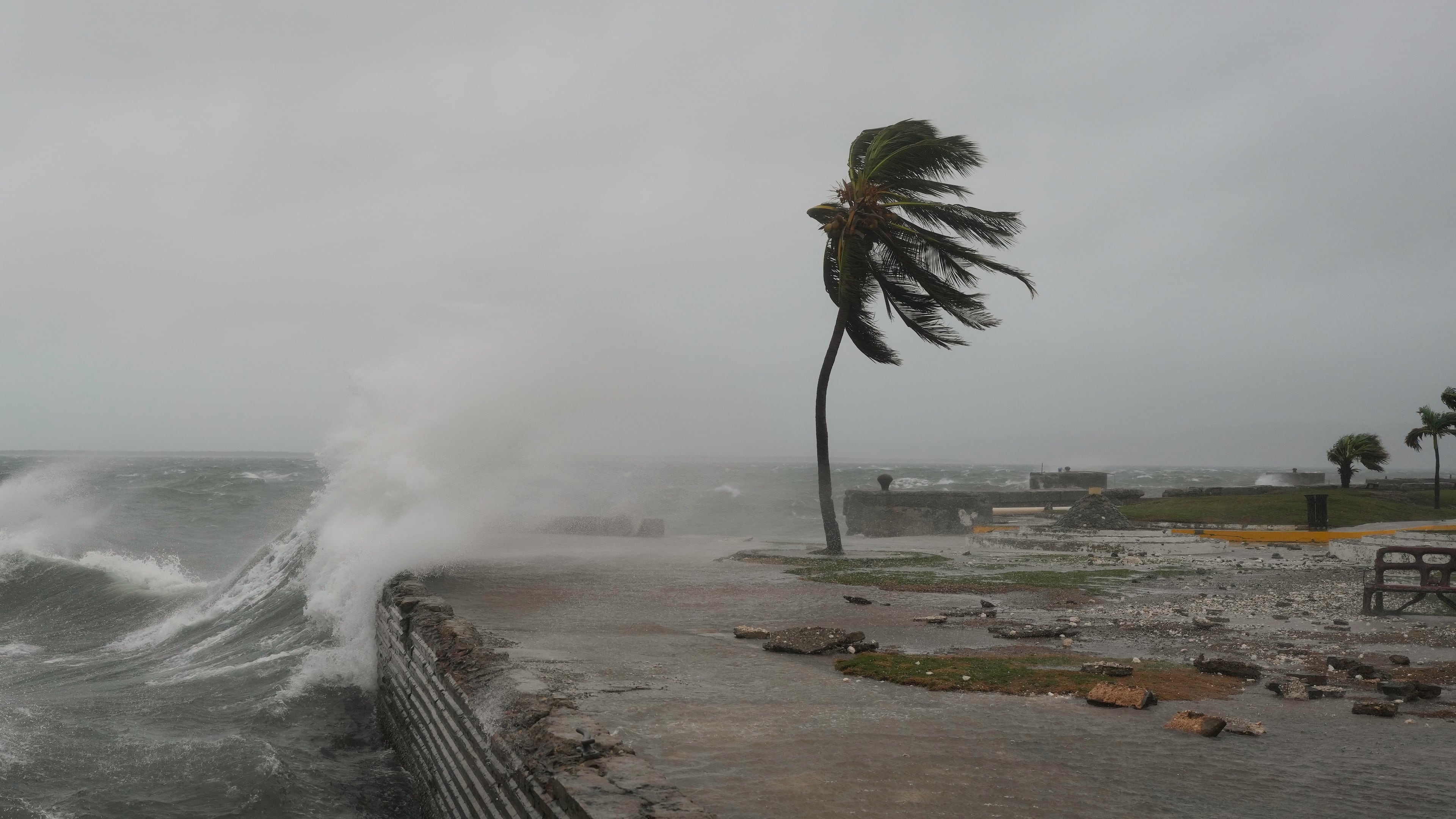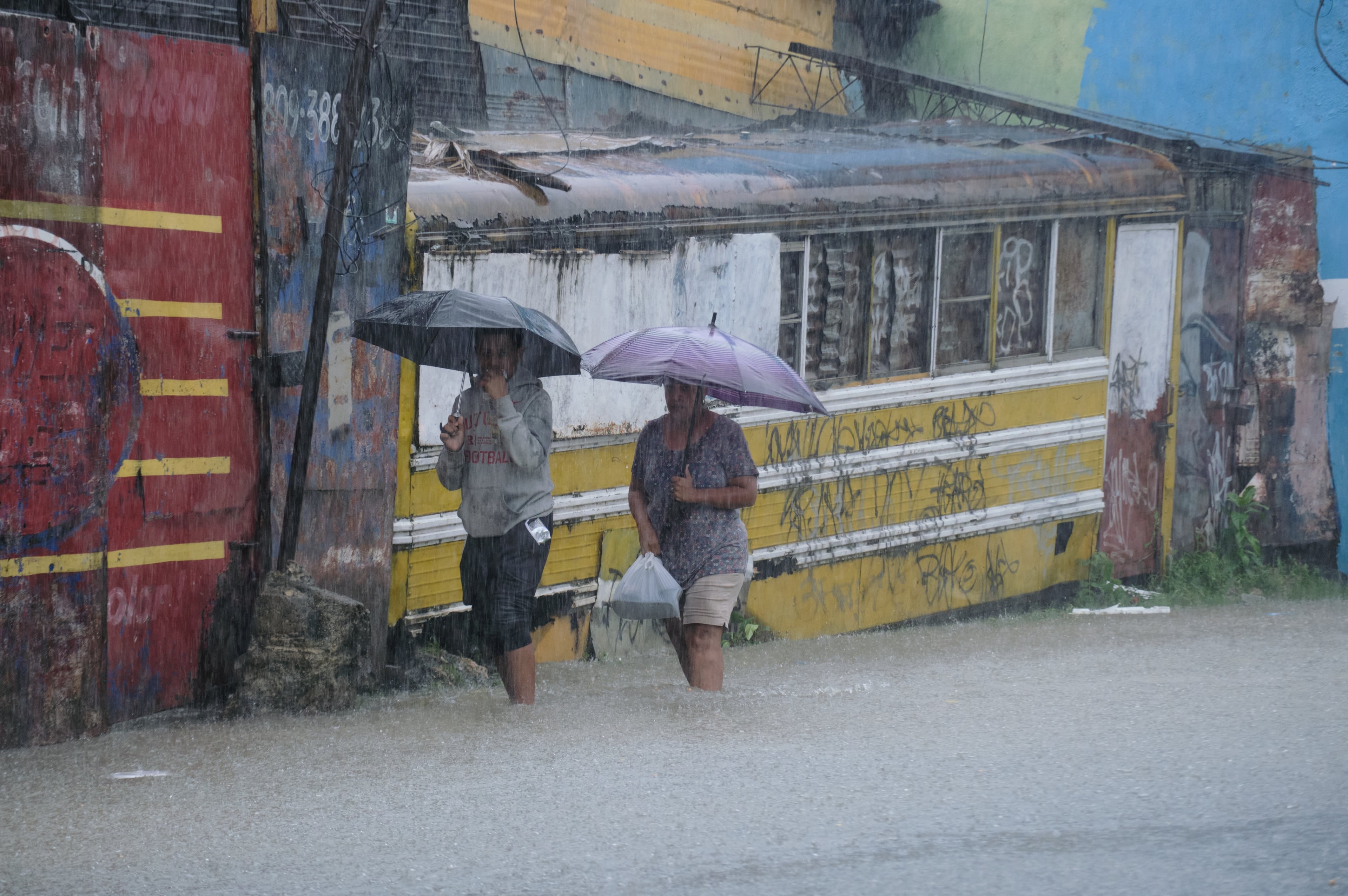Jamaica braces for catastrophic winds and flooding as Hurricane Melissa approaches

KINGSTON, Jamaica (AP) — Hurricane Melissa strengthened Tuesday as it crawled toward Jamaica, where officials and residents braced for catastrophic winds, flash flooding and landslides from the Category 5 storm, one of the strongest Atlantic hurricanes in history.
The streets in the capital, Kingston, remained largely empty as Melissa approached with 185 mph (295 kph) winds, save for the lone stray dog crossing puddles and a handful of people walking briskly under tree branches waving in a stiff wind.
The Jamaican government said it had done all it could to prepare as it warned of devastating damage from the strongest hurricane to hit the island since recordkeeping began 174 years ago.
“There is no infrastructure in the region that can withstand a Category 5,” Prime Minister Andrew Holness said. “The question now is the speed of recovery. That’s the challenge.”
The U.S. National Hurricane Center in Miami warned people in the storm's path as landfall neared Tuesday morning that this is the “last chance to protect your life.” The storm is expected slice diagonally across the island and hit Cuba shortly afterward.
Desmond McKenzie, deputy chairman of Jamaica’s Disaster Risk Management Council, urged people to seek shelter and stay indoors as the storm crosses the island.
“Jamaica, this is not the time to be brave,” he said.
Melissa is the fifth most intense Atlantic basin hurricane on record by pressure and the strongest to make landfall since Hurricane Dorian in 2019, according to hurricane specialist and storm surge expert Michael Lowry.
It is "a worst-case scenario unfolding for Jamaica,” he said.
Landslides, fallen trees and numerous power outages were reported ahead of the storm, with officials in Jamaica cautioning that the cleanup and damage assessment would be slow. The storm is expected to enter near St. Elizabeth parish in the south and exit around St. Ann parish in the north, forecasters said.
“Total structural failure is possible near the path of Melissa’s center,” the National Hurricane Center said.
Jamaica prepares for the aftermath
McKenzie said the government was prepared for potential rescues immediately after the storm.
“We have boats, helicopters, you name it,” he said.
A life-threatening storm surge of up to 13 feet (4 meters) is expected across southern Jamaica, with officials concerned about the impact on some hospitals along the coastline. Health Minister Christopher Tufton said some patients were relocated from the ground floor to the second floor, "and (we) hope that will suffice for any surge that will take place.”
The storm already was blamed for seven deaths in the Caribbean, including three in Jamaica, three in Haiti and one in the Dominican Republic, where another person remains missing.
On Tuesday morning, Melissa was centered about 40 miles (60 kilometers) south-southeast of Negril, Jamaica, and about 235 miles (380 kilometers) southwest of Guantánamo, Cuba. The system had maximum sustained winds of 185 mph (295 kph) and was moving north-northeast at 9 mph (15 kph), according to the U.S. National Hurricane Center in Miami.
Colin Bogle, a Mercy Corps adviser based near Kingston, said most families are sheltering in place despite the government ordering evacuations in flood-prone communities.
“Many have never experienced anything like this before, and the uncertainty is frightening,” he said. “There is profound fear of losing homes and livelihoods, of injury, and of displacement.”
Necephor Mghendi, the International Red Cross’ regional head of delegation for the English- and Dutch-speaking Caribbean, said an estimated 1.5 million people in the storm’s path will be affected but many others may be as well.
“The entire population may feel the impact one way or the other,” he said by video link from Port-of-Spain, Trinidad and Tobago.
More than 240,000 customers were without power before landfall, and about one-fourth of the telecommunications system was offline, said Darryl Vaz, transport and energy minister.
He said crews will clean and run tests at the island's two main international airports Wednesday in hopes of receiving emergency relief flights as early as Thursday.
“We will get through this. God bless Jamaica,” he said.
U.N. agencies and dozens of nonprofits had food, medicine and other essential supplies prepositioned as they awaited a distribution rush after the storm.
Matthew Samuda, Jamaica’s water and environment minister, said he had more than 50 generators available to deploy after the storm, but warned people to set aside clean water and use it sparingly.
“Every drop will count,” he said.
Melissa takes aim at Cuba
Melissa was expected to make landfall in eastern Cuba late Tuesday.
A hurricane warning was in effect for Granma, Santiago de Cuba, Guantánamo, Las Tunas and Holguin provinces, while a tropical storm warning was in effect for Camaguey. Up to 20 inches (51 centimeters) of rain were forecast for parts of Cuba, along with a significant storm surge along the coast.
Cuban officials said Monday that they were evacuating more than 600,000 people from the region, including Santiago, the island’s second-largest city.
Melissa also has drenched the southern regions of Haiti and the Dominican Republic, with a tropical storm warning still in effect for Haiti.
The hurricane was forecast to turn northeast and strike the southeast Bahamas by Wednesday evening.
___
Coto reported from San Juan, Puerto Rico. Geir Moulson in Berlin contributed.
